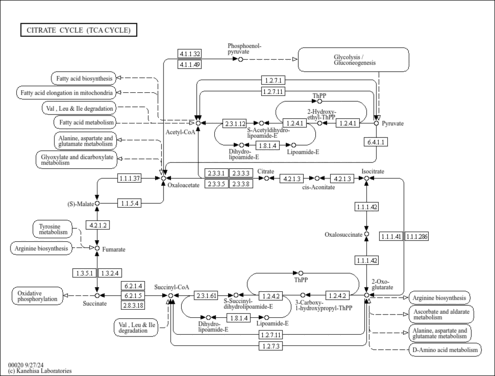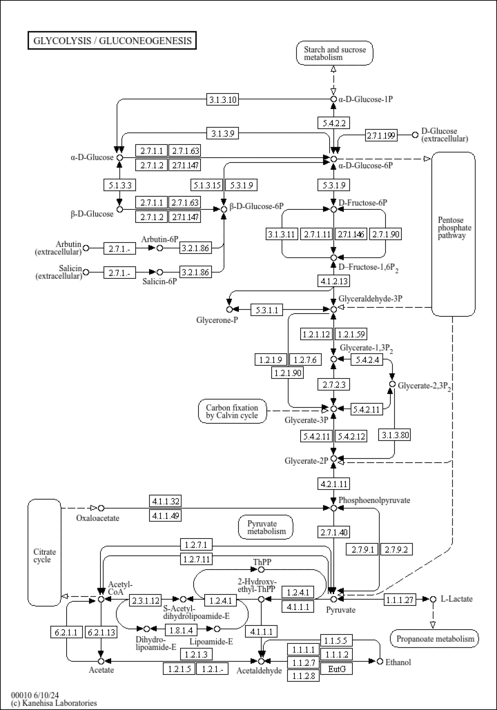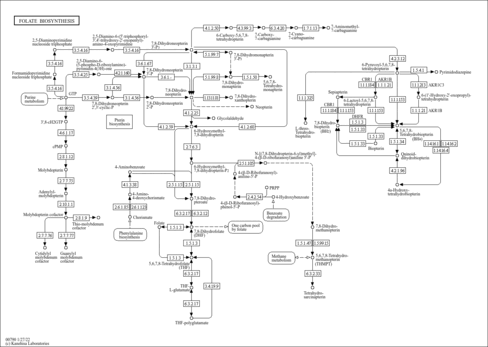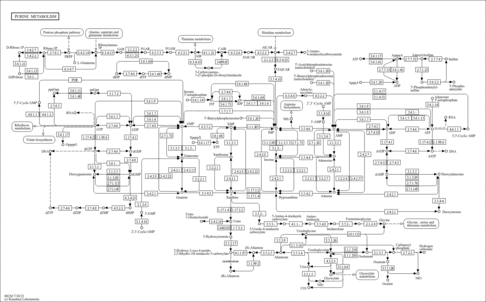| Phospholipase D1 | PLD1 | 3q26 | Q13393 | details |
| Ectonucleoside triphosphate diphosphohydrolase 1 | ENTPD1 | 10q24 | P49961 | details |
| Soluble calcium-activated nucleotidase 1 | CANT1 | 17q25.3 | Q8WVQ1 | details |
| Ectonucleoside triphosphate diphosphohydrolase 3 | ENTPD3 | 3p21.3 | O75355 | details |
| Uridine-cytidine kinase 1 | UCK1 | 9q34.13 | Q9HA47 | details |
| Nucleoside diphosphate kinase, mitochondrial | NME4 | 16p13.3 | O00746 | details |
| Nucleoside diphosphate kinase A | NME1 | 17q21.3 | P15531 | details |
| Nucleoside diphosphate kinase 7 | NME7 | 1q24 | Q9Y5B8 | details |
| Nucleoside diphosphate kinase B | NME2 | 17q21.3 | P22392 | details |
| Nucleoside diphosphate kinase 3 | NME3 | 16q13.3 | Q13232 | details |
| Nucleoside diphosphate kinase 6 | NME6 | 3p21 | O75414 | details |
| Ectonucleotide pyrophosphatase/phosphodiesterase family member 1 | ENPP1 | 6q22-q23 | P22413 | details |
| Fucose-1-phosphate guanylyltransferase | FPGT | 1p31.1 | O14772 | details |
| Inosine triphosphate pyrophosphatase | ITPA | 20p | Q9BY32 | details |
| GMP synthase [glutamine-hydrolyzing] | GMPS | 3q24 | P49915 | details |
| Bis(5'-nucleosyl)-tetraphosphatase [asymmetrical] | NUDT2 | 9p13 | P50583 | details |
| Adenylate kinase isoenzyme 5 | AK5 | 1p31 | Q9Y6K8 | details |
| CTP synthase 1 | CTPS1 | 1p34.1 | P17812 | details |
| Glutamate dehydrogenase 1, mitochondrial | GLUD1 | 10q23.3 | P00367 | details |
| Adenylate cyclase type 7 | ADCY7 | 16q12.1 | P51828 | details |
| Adenylate cyclase type 4 | ADCY4 | 14q12 | Q8NFM4 | details |
| Adenylate cyclase type 6 | ADCY6 | 12q12-q13 | O43306 | details |
| Adenylate cyclase type 5 | ADCY5 | 3q21.1 | O95622 | details |
| Adenylate cyclase type 8 | ADCY8 | 8q24 | P40145 | details |
| Adenylate cyclase type 9 | ADCY9 | 16p13.3 | O60503 | details |
| Adenylate cyclase type 3 | ADCY3 | 2p23.3 | O60266 | details |
| Adenylate cyclase type 1 | ADCY1 | 7p13-p12 | Q08828 | details |
| DNA-directed RNA polymerase III subunit RPC4 | POLR3D | | P05423 | details |
| DNA-directed RNA polymerase II subunit RPB2 | POLR2B | 4q12 | P30876 | details |
| DNA-directed RNA polymerase II subunit RPB1 | POLR2A | 17p13.1 | P24928 | details |
| DNA-directed RNA polymerase, mitochondrial | POLRMT | 19p13.3 | O00411 | details |
| DNA-directed RNA polymerase I subunit RPA2 | POLR1B | 2q13 | Q9H9Y6 | details |
| DNA-directed RNA polymerase III subunit RPC7 | POLR3G | | O15318 | details |
| DNA-directed RNA polymerase III subunit RPC2 | POLR3B | 12q23.3 | Q9NW08 | details |
| DNA-directed RNA polymerase I subunit RPA49 | POLR1E | 9p13.2 | Q9GZS1 | details |
| DNA-directed RNA polymerase III subunit RPC8 | POLR3H | | Q9Y535 | details |
| DNA-directed RNA polymerase III subunit RPC10 | POLR3K | | Q9Y2Y1 | details |
| Pyruvate kinase isozymes M1/M2 | PKM | 15q22 | P14618 | details |
| Pyruvate kinase isozymes R/L | PKLR | 1q21 | P30613 | details |
| Ectonucleoside triphosphate diphosphohydrolase 4 | ENTPD4 | 8p21.3 | Q9Y227 | details |
| Adenylosuccinate synthetase isozyme 2 | ADSS | 1q44 | P30520 | details |
| Adenylosuccinate synthetase isozyme 1 | ADSSL1 | 14q32.33 | Q8N142 | details |
| Succinyl-CoA ligase [ADP/GDP-forming] subunit alpha, mitochondrial | SUCLG1 | 2p11.2 | P53597 | details |
| Phosphoenolpyruvate carboxykinase [GTP], mitochondrial | PCK2 | 14q11.2 | Q16822 | details |
| Succinyl-CoA ligase [GDP-forming] subunit beta, mitochondrial | SUCLG2 | 3p14.1 | Q96I99 | details |
| Phosphoenolpyruvate carboxykinase, cytosolic [GTP] | PCK1 | 20q13.31 | P35558 | details |
| Adenylate cyclase type 2 | ADCY2 | 5p15.3 | Q08462 | details |
| GTP cyclohydrolase 1 | GCH1 | 14q22.1-q22.2 | P30793 | details |
| Succinyl-CoA ligase [ADP-forming] subunit beta, mitochondrial | SUCLA2 | 13q12.2-q13.3 | Q9P2R7 | details |
| Guanylate cyclase soluble subunit beta-1 | GUCY1B3 | 4q31.3-q33 | Q02153 | details |
| Retinal guanylyl cyclase 1 | GUCY2D | 17p13.1 | Q02846 | details |
| Guanylate cyclase soluble subunit alpha-3 | GUCY1A3 | 4q31.1-q31.2 | Q02108 | details |
| Guanylate cyclase soluble subunit alpha-2 | GUCY1A2 | 11q21-q22 | P33402 | details |
| Retinal guanylyl cyclase 2 | GUCY2F | Xq22 | P51841 | details |
| Guanylate cyclase soluble subunit beta-2 | GUCY1B2 | | O75343 | details |
| Serine/threonine-protein kinase PAK 7 | PAK7 | 20p12 | Q9P286 | details |
| Serine/threonine-protein kinase PAK 6 | PAK6 | 15q14 | Q9NQU5 | details |
| Serine/threonine-protein kinase PAK 4 | PAK4 | 19q13.2 | O96013 | details |
| Serine/threonine-protein kinase Nek9 | NEK9 | 14q24.3 | Q8TD19 | details |
| Citron Rho-interacting kinase | CIT | 12q24 | O14578 | details |
| Serine/threonine-protein kinase PAK 3 | PAK3 | | O75914 | details |
| Rho-associated protein kinase 1 | ROCK1 | 18q11.1 | Q13464 | details |
| Serine/threonine-protein kinase PAK 2 | PAK2 | 3q29 | Q13177 | details |
| Ectonucleoside triphosphate diphosphohydrolase 2 | ENTPD2 | | Q9Y5L3 | details |
| Rho-associated protein kinase 2 | ROCK2 | 2p24 | O75116 | details |
| Arf-GAP with GTPase, ANK repeat and PH domain-containing protein 2 | AGAP2 | 12q14.1 | Q99490 | details |
| Rho guanine nucleotide exchange factor 1 | ARHGEF1 | 19q13.13 | Q92888 | details |
| Rap1 GTPase-GDP dissociation stimulator 1 | RAP1GDS1 | 4q23-q25 | P52306 | details |
| Guanine nucleotide-binding protein G(s) subunit alpha isoforms short | GNAS | 20q13.3 | P63092 | details |
| Vinexin | SORBS3 | 8p21.3 | O60504 | details |
| GTPase HRas | HRAS | 11p15.5 | P01112 | details |
| GTP cyclohydrolase 1 feedback regulatory protein | GCHFR | 15q15 | P30047 | details |
| Guanine nucleotide-binding protein G(q) subunit alpha | GNAQ | 9q21 | P50148 | details |
| Guanine nucleotide-binding protein subunit alpha-11 | GNA11 | 19p13.3 | P29992 | details |
| Guanine nucleotide-binding protein G(t) subunit alpha-1 | GNAT1 | 3p21 | P11488 | details |
| Uridine-cytidine kinase 2 | UCK2 | 1q23 | Q9BZX2 | details |
| Protein ALEX | GNAS | 20q13.3 | P84996 | details |
| Lysophosphatidic acid receptor 2 | LPAR2 | 19p12 | Q9HBW0 | details |
| Mannose-1-phosphate guanyltransferase beta | GMPPB | 3p21.31 | Q9Y5P6 | details |
| Mannose-1-phosphate guanyltransferase alpha | GMPPA | 2q35 | Q96IJ6 | details |
| Adenylate cyclase type 10 | ADCY10 | 1q24 | Q96PN6 | details |
| Acyl-coenzyme A synthetase ACSM1, mitochondrial | ACSM1 | 16p12.3 | Q08AH1 | details |
| 1-phosphatidylinositol 4,5-bisphosphate phosphodiesterase epsilon-1 | PLCE1 | 10q23 | Q9P212 | details |
| Uridine-cytidine kinase-like 1 | UCKL1 | 20q13.33 | Q9NWZ5 | details |
| Ectonucleoside triphosphate diphosphohydrolase 7 | ENTPD7 | | Q9NQZ7 | details |
| Ectonucleoside triphosphate diphosphohydrolase 8 | ENTPD8 | 9q34.3 | Q5MY95 | details |
| Rho GTPase-activating protein 32 | ARHGAP32 | 11q24.3 | A7KAX9 | details |
| Acyl-coenzyme A synthetase ACSM6, mitochondrial | ACSM6 | 10q23.33 | Q6P461 | details |
| ADP-ribosylation factor GTPase-activating protein 1 | ARFGAP1 | 20q13.33 | Q8N6T3 | details |
| ADP-ribosylation factor GTPase-activating protein 2 | ARFGAP2 | 11p11.2-p11.12 | Q8N6H7 | details |
| ADP-ribosylation factor GTPase-activating protein 3 | ARFGAP3 | 22q13.2 | Q9NP61 | details |
| Eukaryotic peptide chain release factor subunit 1 | ETF1 | 5q31.1 | P62495 | details |
| Eukaryotic peptide chain release factor GTP-binding subunit ERF3A | GSPT1 | 16p13.1 | P15170 | details |
| Eukaryotic peptide chain release factor GTP-binding subunit ERF3B | GSPT2 | | Q8IYD1 | details |
| GTPase-activating protein and VPS9 domain-containing protein 1 | GAPVD1 | 9q33.3 | Q14C86 | details |
| GTPase IMAP family member 1 | GIMAP1 | 7q36.1 | Q8WWP7 | details |
| GTPase IMAP family member 2 | GIMAP2 | 7q36.1 | Q9UG22 | details |
| GTPase IMAP family member 4 | GIMAP4 | 7q36.1 | Q9NUV9 | details |
| GTPase IMAP family member 5 | GIMAP5 | 7q36.1 | Q96F15 | details |
| GTPase IMAP family member 6 | GIMAP6 | | Q6P9H5 | details |
| GTPase IMAP family member 7 | GIMAP7 | 7q36.1 | Q8NHV1 | details |
| GTPase IMAP family member 8 | GIMAP8 | 7q36.1 | Q8ND71 | details |
| tRNA modification GTPase GTPBP3, mitochondrial | GTPBP3 | 19p13.11 | Q969Y2 | details |
| Probable E3 ubiquitin-protein ligase HERC1 | HERC1 | 15q22 | Q15751 | details |
| Protein-cysteine N-palmitoyltransferase HHAT | HHAT | 1q32 | Q5VTY9 | details |
| Interferon-inducible GTPase 5 | IRGC | 19q13.31 | Q6NXR0 | details |
| Ras GTPase-activating-like protein IQGAP1 | IQGAP1 | 15q26.1 | P46940 | details |
| Leucine-rich repeat serine/threonine-protein kinase 1 | LRRK1 | 15q26.3 | Q38SD2 | details |
| Large subunit GTPase 1 homolog | LSG1 | 3q29 | Q9H089 | details |
| MAP kinase-activating death domain protein | MADD | 11p11.2 | Q8WXG6 | details |
| Ran guanine nucleotide release factor | RANGRF | 17p13.1 | Q9HD47 | details |
| Serine/threonine-protein kinase MRCK alpha | CDC42BPA | 1q42.11 | Q5VT25 | details |
| Serine/threonine-protein kinase MRCK beta | CDC42BPB | 14q32.3 | Q9Y5S2 | details |
| Serine/threonine-protein kinase MRCK gamma | CDC42BPG | 11q13.1 | Q6DT37 | details |
| Mitochondrial GTPase 1 | MTG1 | 10q26.3 | Q9BT17 | details |
| 2'-5'-oligoadenylate synthase 3 | OAS3 | 12q24.2 | Q9Y6K5 | details |
| Obg-like ATPase 1 | OLA1 | 2q31.1 | Q9NTK5 | details |
| Phosphatidylinositol 4-kinase type 2-beta | PI4K2B | 4p15.2 | Q8TCG2 | details |
| Serine/threonine-protein kinase PAK 1 | PAK1 | 11q13-q14 | Q13153 | details |
| Rab GTPase-binding effector protein 1 | RABEP1 | 17p13.2 | Q15276 | details |
| Rab GTPase-binding effector protein 2 | RABEP2 | 16p11.2 | Q9H5N1 | details |
| Ran-specific GTPase-activating protein | RANBP1 | 22q11.21 | P43487 | details |
| GTPase ERas | ERAS | | Q7Z444 | details |
| GTPase KRas | KRAS | 12p12.1 | P01116 | details |
| GTPase NRas | NRAS | 1p13.2 | P01111 | details |
| Rab3 GTPase-activating protein catalytic subunit | RAB3GAP1 | 2q21.3 | Q15042 | details |
| Rab3 GTPase-activating protein non-catalytic subunit | RAB3GAP2 | 1q41 | Q9H2M9 | details |
| E3 SUMO-protein ligase RanBP2 | RANBP2 | 2q12.3 | P49792 | details |
| GTPase RhebL1 | RHEBL1 | 12q13.12 | Q8TAI7 | details |
| Rho GTPase-activating protein 21 | ARHGAP21 | 10p12.1|10p12.3 | Q5T5U3 | details |
| Putative E3 ubiquitin-protein ligase SH3RF1 | SH3RF1 | 4q32.3 | Q7Z6J0 | details |
| Putative nucleoside diphosphate kinase | NME2P1 | 12q24.31 | O60361 | details |
| Rho-related GTP-binding protein RhoU | RHOU | 1q42.11-q42.3 | Q7L0Q8 | details |
| DNA-directed RNA polymerase III subunit RPC1 | POLR3A | 10q22-q23 | O14802 | details |
| DNA-directed RNA polymerase I subunit RPA1 | POLR1A | 2p11.2 | O95602 | details |
| Zinc ribbon domain containing 1 | ZNRD1 | 6p21.3 | Q2L6J2 | details |
| DNA-directed RNA polymerases I and III subunit RPAC2 | POLR1D | 13q12.2 | Q9Y2S0 | details |
| DNA-directed RNA polymerase | DKFZp686D10173 | | Q7Z3R8 | details |
| DNA-directed RNA polymerase III subunit RPC7-like | POLR3GL | | Q9BT43 | details |
| POLR1C protein | POLR1C | 6p21.1 | Q96HT3 | details |
| Leucine-rich repeat serine/threonine-protein kinase 2 | LRRK2 | 12q12 | Q5S007 | details |
| Mitochondrial Rho GTPase 1 | RHOT1 | 17q11.2 | Q8IXI2 | details |
| Ninein | NIN | 14q22.1 | Q8N4C6 | details |
| Arf-GAP with GTPase, ANK repeat and PH domain-containing protein 1 | AGAP1 | 2q37 | Q9UPQ3 | details |
| Protein RCC2 | RCC2 | 1p36.13 | Q9P258 | details |
| Protein very KIND | KNDC1 | 10q26.3 | Q76NI1 | details |
| Hydroxylysine kinase | AGPHD1 | 15q25.1 | A2RU49 | details |
| Cyclic GMP-AMP synthase | MB21D1 | 6q13 | Q8N884 | details |
| Nucleoside diphosphate kinase homolog 5 | NME5 | | P56597 | details |
| DNA-directed RNA polymerase I subunit RPA12 | ZNRD1 | | Q9P1U0 | details |
| DNA-directed RNA polymerase I subunit RPA43 | TWISTNB | 7p21.1 | Q3B726 | details |
| DNA-directed RNA polymerases I, II, and III subunit RPABC1 | POLR2E | 19p13.3 | P19388 | details |
| DNA-directed RNA polymerases I, II, and III subunit RPABC2 | POLR2F | 22q13.1 | P61218 | details |
| DNA-directed RNA polymerases I, II, and III subunit RPABC3 | POLR2H | 3q28 | P52434 | details |
| DNA-directed RNA polymerases I, II, and III subunit RPABC4 | POLR2K | 8q22.2 | P53803 | details |
| DNA-directed RNA polymerases I, II, and III subunit RPABC5 | POLR2L | 11p15 | P62875 | details |
| DNA-directed RNA polymerases I and III subunit RPAC1 | POLR1C | 6p21.1 | O15160 | details |
| DNA-directed RNA polymerase II subunit RPB11-a | POLR2J | 7q22.1 | P52435 | details |
| DNA-directed RNA polymerase II subunit RPB11-b1 | POLR2J2 | 7q22.1 | Q9GZM3 | details |
| DNA-directed RNA polymerase II subunit RPB3 | POLR2C | 16q13-q21 | P19387 | details |
| DNA-directed RNA polymerase II subunit RPB4 | POLR2D | 2q21 | O15514 | details |
| DNA-directed RNA polymerase II subunit RPB7 | POLR2G | 11q13.1 | P62487 | details |
| DNA-directed RNA polymerase II subunit RPB9 | POLR2I | 19q12 | P36954 | details |
| DNA-directed RNA polymerase III subunit RPC3 | POLR3C | | Q9BUI4 | details |
| DNA-directed RNA polymerase III subunit RPC5 | POLR3E | | Q9NVU0 | details |
| DNA-directed RNA polymerase III subunit RPC6 | POLR3F | | Q9H1D9 | details |
| Probable tRNA(His) guanylyltransferase | THG1L | 5q33.3 | Q9NWX6 | details |



